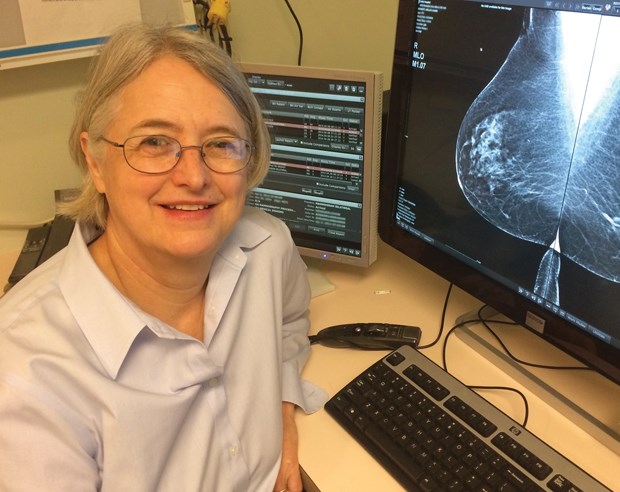Radiologist Dr. Lynette Thurber has been in the business of mammography for the better part of three and a half decades at Richmond Hospital and is now helping usher in the new era of breast cancer detection and diagnosis.
Thanks to the support from the Nite of Hope Richmond the hospital will be taking delivery of a second digital mammography machine that will support the facility’s status as a screening hub for the area — serving the needs of roughly 15,000 patients with screening mammograms annually.
“It’s about 50 to 55 a day, and we run on Saturdays,” Thurber said.
About a month ago Richmond Hospital received it’s first digital mammography machine which offers a big leap in technology compared to the old, analog equipment that used film to produce an image for doctors to study rather than the digital files from the new machine.
“We’re just getting used to the new machine and ramping up the numbers so we can do the same amount of screening as we did before,” Thurber said. “We need a second unit, though, because Richmond Hospital has been designated as a centre for breast cancer diagnosis and treatment. So, we need to do about 15 diagnostic mammograms a day, plus stereotactic core biopsies which requires the use of a digital mammography machine, and we can’t do it all on one machine.”
A stereotactic core biopsy (SCB) uses a mammography machine to guide a biopsy needle into an area of concern. When suspicious lesions are identified on a mammogram, but cannot be found with ultrasound or clinical breast exam, a mammogram is used to create the necessary visibility to find the lesion.
While there is no difference in results in screening, Thurber said there are studies showing digital mammography is better for patients with dense breast tissue.
“For women who have a palpable mass, the diagnostic work up can pretty much tell you one of three things,” Thurber said. “Is it probably a cancer, is it definitely benign, or is it one of those middle situations that needs to be followed or biopsied.”
Prior to the introduction of the new, digital machine, Richmond patients were served by two analog mammography machines — one at Richmond Hospital and the other at Brooke Radiology’s clinic on No. 3 Road.
With no government funding to upgrade that clinic’s equipment it will shut down operations sometime this year.
Thurber estimated it will take another four to five years before all of B.C. is completely switched over to digital mammography.
Another one of the reasons for its demise the receding support for processing film from old, analog machines.
“Film screening (with analog equipment) is a much more involved process. You’ve got processors and film, chemicals and a lot of quality control to deal with,” Thurber said.
One of the biggest advantages of digital is the ability to easily store the results as electronic files which can also be shared quickly with other doctors.
But until the second machine arrives, staff at Richmond Hospital will be working hard to maintain service needs.
“I don’t know how we are going to get along until we get the second machine. Resources will be stretched,” Thurber said. “We may have to send people out of Richmond.
“We’re hoping to get it as soon as possible. We’ve got the room and need for it,” Thurber said, adding praise for the Nite of Hope event. “We’re just very grateful to all the donors who help us with getting these pieces of equipment.”



